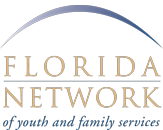When I asked the youth at Anchorage Children’s Home, overwhelmingly, the majority of them said the hurricane didn’t really affect them that much. A few of their friends had moved away. They had to move. They had to go to a different school. Their parents had to buy a new car. Once again, they said these words with surprisingly little emotion.
Hoping for a window into their desires and their unmet needs, I asked questions that required some critical thinking and speculation. What would they like to see happen? How would they like Panama City to look like as we rebuild? What changes would they like to take place?
“It would be cool to get a rec center” was an almost unanimous response. Someplace for kids to play ball and go swimming. Another mall, but not like outdoor Pier Park. A traditional mall, so they can hang out with their friends in the air conditioning.
Only one youth responded that he “would like to see less pollution,” by which he really meant less debris. Less garbage. The piles along the roadside, by now completely soaked, baked in the sun, and mixed with organic material like leaves and branches, still line many of our streets. Entire apartment complexes lay empty and exposed, like someone started to peel off the wrappers of pieces of candy and then forgot about them. In 90 days, municipal services picked up 20 years’ worth of debris. Twenty years and yet, we are nowhere near finished.
In our work we refer to an index that measures trauma in childhood called Adverse Childhood Experiences (ACEs). It is this background level of stress that, for adults, is acting the same way ACEs do. For children and young adults, it effectively is another ACE for them. Stress begets stress, and the psychological weariness we are collectively facing is amplifying the effects of everyday discomforts. Every nail in a tire, every traffic jam, every demolition crew leveling a historic building feels like another straw on the camel’s already herniated spine.
When I began to ponder the responses that my 10 kids gave me, I began to realize that they were not simply being apathetic teenagers. They were protecting themselves, and are still processing the impact of this catastrophic event. But because most of them have personal catastrophes to deal with, they are minimizing the ambient stress of living in what looks like a war-torn city.
One of the great joys and the great sorrows of my job is participating in their process of peeling back those layers of trauma and hurt. Helping them to acknowledge and learn to cope with their pain and discomfort through this unveiling.
In the years that will follow October 10th, 2018, I hope that the kids’ wishes for more recreation and more hangout spots comes true. To see Panama City flourish and be enriched with more egalitarian opportunities for fitness and culture, more places to strengthen our bodies and our minds, will be the healing balm that will make our fractured souls feel whole again.
Nicole Putnam serves as Youth Specialist at Anchorage Children’s Home in Panama City, FL and can be reached at naputnam@gmail.com

